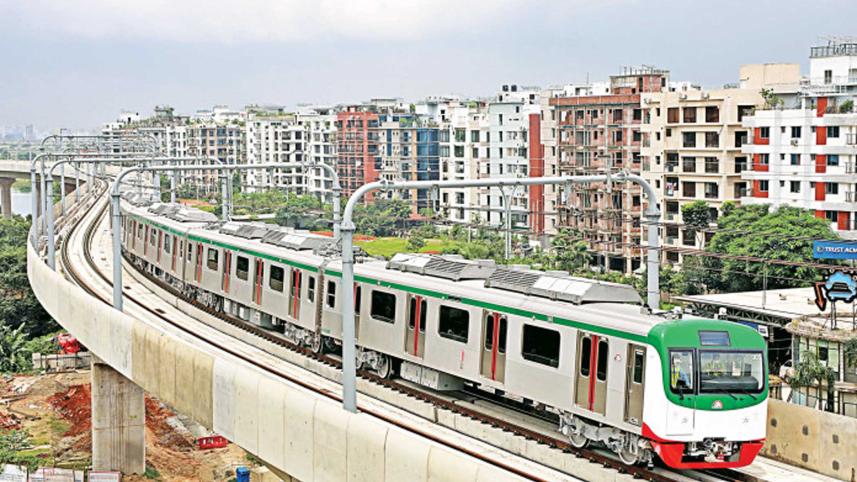Dhaka metro rail to usher in a new era of commuting

Bangladesh is set to embark on a new era of commuting with a new mode of transport hitherto unseen on our land—the elevated metro rail of Dhaka. The first step in that direction was taken on Sunday, when the road transport and bridges minister inaugurated a series of test runs of the metro train, which will continue until its planned commercial launch in December next year. Sunday saw the beginning of what is being called the "performance tests", which will continue for about six months, followed by three months of "integrity tests" and then another five months of "trial runs" (without passengers). These test runs are to ensure the elevated train service is ready for use while works on the overhead railway viaducts, tracks, wiring, and other preparations are in various stages of completion.
This is a big moment in the country's transport sector. Although the train service will be launched initially from Uttara to Agargaon—and later to Motijheel, covering a distance of 20.10 km—one can imagine a successful period of run may eventually lead to its replication across other busy parts of Dhaka and also in other metropolitan areas of Bangladesh. The benefits of an elevated metro rail in an overpopulated, rapidly urbanising country like ours—forever jostling for space—are many. It will not only significantly reduce travel time in daily commute but will also carry a large number of passengers, easing the pressure on other transport services. The flexibility, ease and speed of communications, and consequent economic potential that this service promises to bring, may have profound impacts on the quality of life.
Reaching that potential, however, will depend to a large extent on how fast the impending work and purchases (of trains, coaches, etc.) are completed and how satisfactorily the service is delivered, once it is available for commercial use. As of July this year, the Dhaka metro rail project, which has seen several deadline extensions since its initiation in 2012, made only 68.49 percent of progress, its execution delayed, most recently, by pandemic-induced disruptions. Going forward, we hope the project work will be expedited and no more disruptions will be allowed to get in the way to ensure the December 2022 deadline is met.
There seems to be no dearth of goodwill on the part of the authorities. However, care should be taken so that it is properly reflected in the execution of the project and the quality of services to be rendered—and so that, to take a cue from past experiences, it doesn't meet the same fate of other ambitious communication projects that have failed to deliver as promised.



 For all latest news, follow The Daily Star's Google News channel.
For all latest news, follow The Daily Star's Google News channel.
Comments